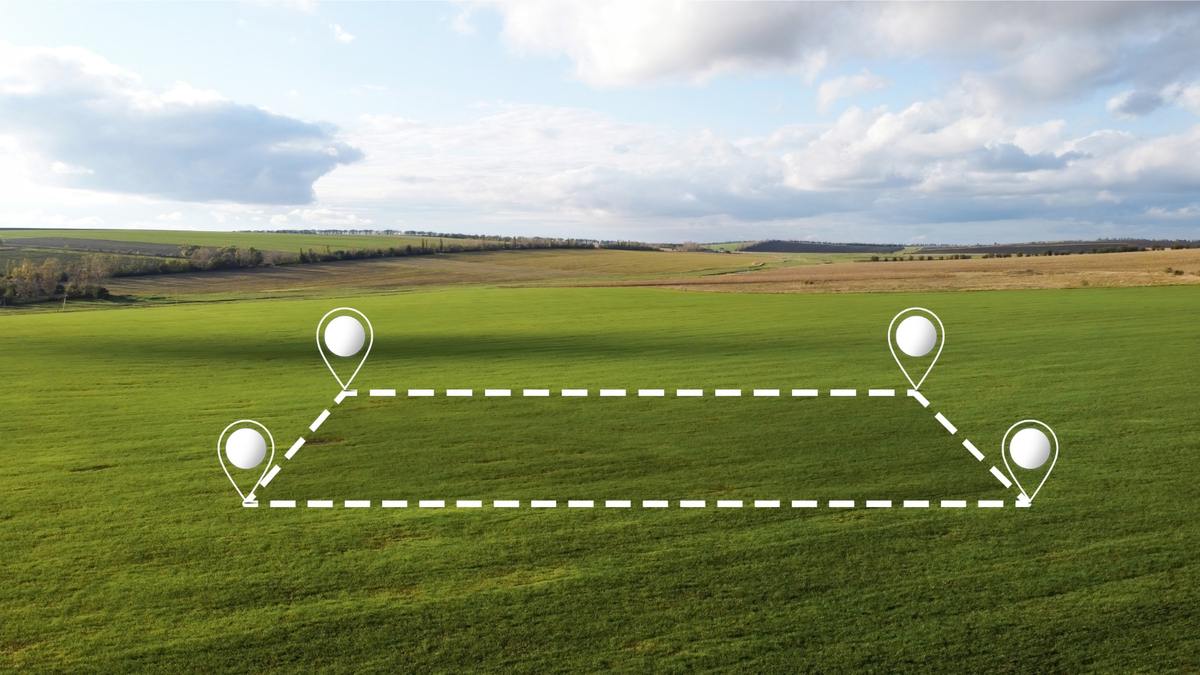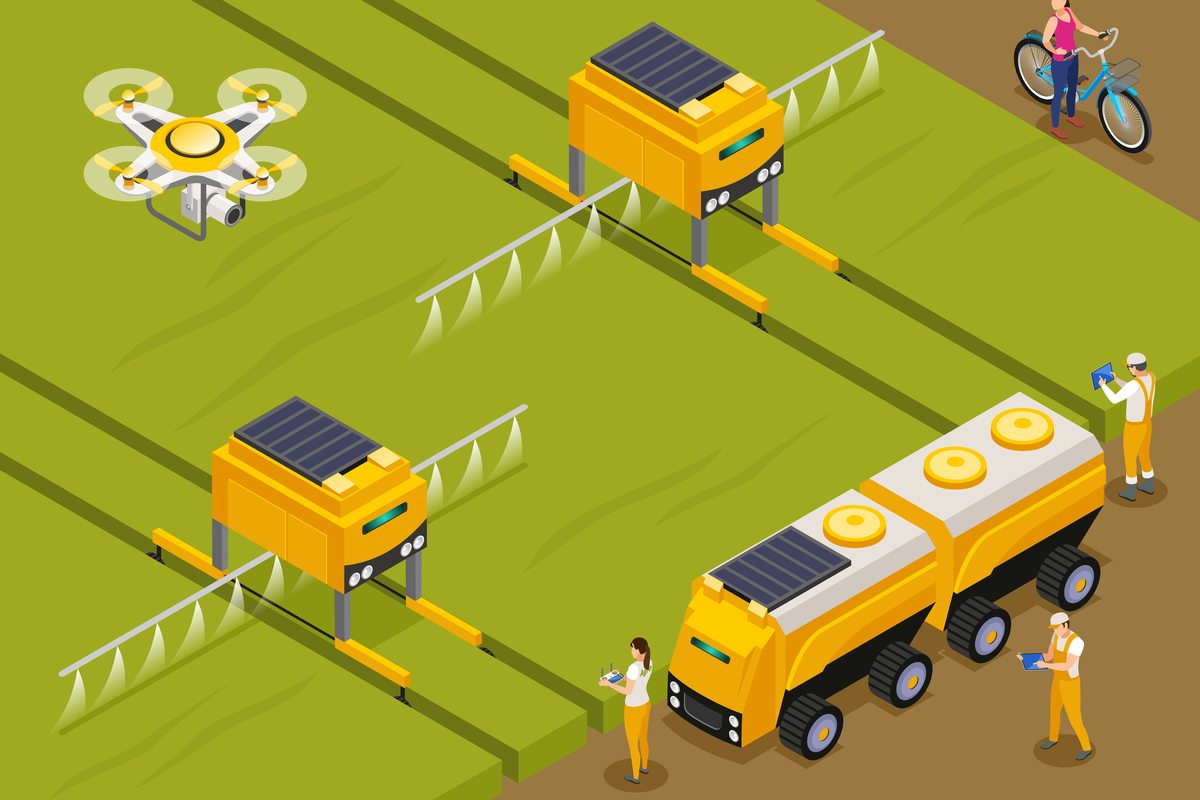GPS or Global Positioning System in agriculture has revolutionized the agricultural sector by integrating satellite-based navigation technology to enhance various aspects of farming practices. By utilizing a network of orbiting satellites, GPS offers accurate and real-time information on geographic coordinates, enabling farmers to track their precise location within a field. GPS technology has found numerous applications in agriculture, including precision farming, crop management, and machinery guidance. Farmers can now leverage GPS to map and analyze their fields, optimize planting and harvesting patterns, and effectively monitor the distribution of vital resources such as fertilizers and pesticides. Overall, GPS has significantly enhanced various aspects of farming practices, leading to increased efficiency and productivity in the agricultural industry.
The utilization of GPS technology in agriculture has proven to be highly beneficial, as it enhances efficiency, minimizes waste, and promotes sustainable farming practices. By providing farmers with precise spatial data, GPS enables them to make well-informed decisions, leading to optimized yields and improved resource utilization within the agricultural landscape. However, it is important to acknowledge that despite its numerous advantages, there are also notable drawbacks associated with the implementation of GPS in agriculture. Farmers and researchers must have a comprehensive understanding of these challenges to effectively address them.
In this article, we will briefly discuss various advantages and disadvantages of GPS in agriculture.
Table of Contents
Advantages of GPS in Agriculture

1. Precision Farming
GPS technology in agriculture plays a crucial role in facilitating precision farming as it offers precise and up-to-date data regarding the whereabouts of agricultural machinery and operations. This invaluable information empowers farmers to effectively regulate the application of fertilizers, pesticides, and water, leading to enhanced resource utilization and minimized ecological footprint.
2. Accurate Mapping and Planning
GPS technology provides farmers with the ability to generate precise field maps, facilitating detailed planning and analysis of agricultural operations. This encompasses the delineation of field boundaries, monitoring of soil variations, and strategic arrangement of crops with utmost accuracy.
3. Machinery Guidance
GPS technology has revolutionized the agricultural industry by enabling farmers to effectively navigate their fields during crucial activities such as planting, cultivation, and harvesting. By utilizing GPS-guided machinery, farmers can achieve precise movements, thereby minimizing overlap and eliminating gaps in their operations. This not only ensures optimal coverage of the fields but also leads to a significant reduction in fuel consumption.
4. Yield Monitoring
GPS-enabled systems facilitate the precise monitoring of crop yields. Through the creation of yield maps, farmers can detect disparities in productivity throughout the field, enabling them to implement targeted interventions and enhance their overall yield management.
5. Time and Cost Efficiency
GPS technology enhances efficiency in agricultural practices, leading to time savings and decreased operational expenses. By utilizing automated guidance systems, farmers can cover larger areas in a shorter period, while accurate navigation reduces the necessity for redoing tasks, ultimately resulting in financial savings.
6. Data-Driven Decision Making
GPS-generated data offers farmers valuable insights to aid in their decision-making processes. By providing information on soil conditions, crop health, and field variability, this data enables farmers to adopt data-driven strategies that optimize agricultural practices for enhanced efficiency and yield.
7. Remote Monitoring and Management
GPS technology provides farmers with the ability to remotely oversee and control their agricultural fields. This technological advancement proves to be especially advantageous for expansive or geographically spread-out farms, as it empowers farmers to stay well-informed and make prompt decisions from a centralized position.
8. Improved Land Use Efficiency
GPS in agriculture is crucial in enhancing land use efficiency through precise mapping and strategic planning. By leveraging this technology, farmers can optimize their planting patterns, minimize wastage, and ensure the optimal utilization of agricultural resources. This enables them to make the most out of the available land, thereby maximizing productivity and sustainability in the agricultural sector.
Disadvantages of GPS in Agriculture

1. High Initial Costs
The implementation of GPS technology necessitates substantial initial expenses for procuring GPS-enabled equipment and software. This initial investment can pose a hindrance to entry for smaller farms with limited financial resources.
2. Technical Complexity
Operating and maintaining GPS systems necessitates a specific degree of technical proficiency. Farmers and agricultural workers may need training to proficiently utilize and resolve issues with these technologies, thereby potentially creating a skills deficit.
3. Dependency on Satellite Signals
The accuracy of GPS relies on an unobstructed view of satellites, making it susceptible to limitations in areas with dense tree cover, tall crops, or regions with frequent cloud cover, resulting in reduced accuracy.
4. Data Security and Privacy Concerns
The utilization of GPS-generated data, particularly when it is shared or stored in cloud systems, gives rise to concerns regarding data security and privacy. Safeguarding confidential information from unauthorized access is of utmost importance to uphold credibility and reliance on this technology.
5. Limited Signal Accuracy in Certain Conditions
Factors such as weather conditions, interference from multiple signal paths, or the arrangement of satellites can impact the precision of GPS signals. In certain situations, especially in difficult landscapes, the accuracy of GPS may be compromised.
6. Equipment Compatibility Issues
Ensuring the harmonious integration of GPS technology with pre-existing farming equipment can pose a considerable challenge. The lack of compatibility in older machinery may require the implementation of upgrades or retrofits to seamlessly incorporate GPS systems.
7. Limited Connectivity in Remote Areas
Access to a reliable and fast internet connection is crucial for the seamless transmission of real-time data in GPS systems, particularly in remote or rural areas. However, the availability of such a connection may be restricted in these regions. Consequently, the immediate utilization of data-driven insights in these locations can be impeded.
8. Over-reliance on Technology
Excessive dependence on GPS technology can give rise to issues of dependency. This over-reliance can cause farmers to excessively rely on automated systems, thereby potentially reducing their practical experience and comprehension of conventional farming methods.
Future of GPS in Agriculture
The potential of GPS in agriculture is highly promising and is expected to witness significant advancements that will tackle existing challenges and expand its positive influence. Despite the initial expenses and technical complexities, continuous innovations are anticipated to enhance the accessibility and user-friendliness of GPS technology, particularly for smaller farms. The reliability of GPS applications will be bolstered by improved satellite connectivity and signal accuracy, ensuring optimal performance even in difficult terrains and diverse atmospheric conditions. Furthermore, the integration of GPS with other cutting-edge technologies such as artificial intelligence and machine learning will further optimize farming operations, enabling more precise decision-making and resource management. Addressing concerns regarding data security and privacy will also contribute to establishing trust in the utilization of GPS-generated agricultural data. As the agricultural industry increasingly adopts sustainable practices, GPS technology will play a crucial role in minimizing environmental impact by effectively managing inputs. With ongoing research, education, and technological advancements, the future of GPS in agriculture appears poised to deliver a more resilient, efficient, and sustainable farming landscape.







